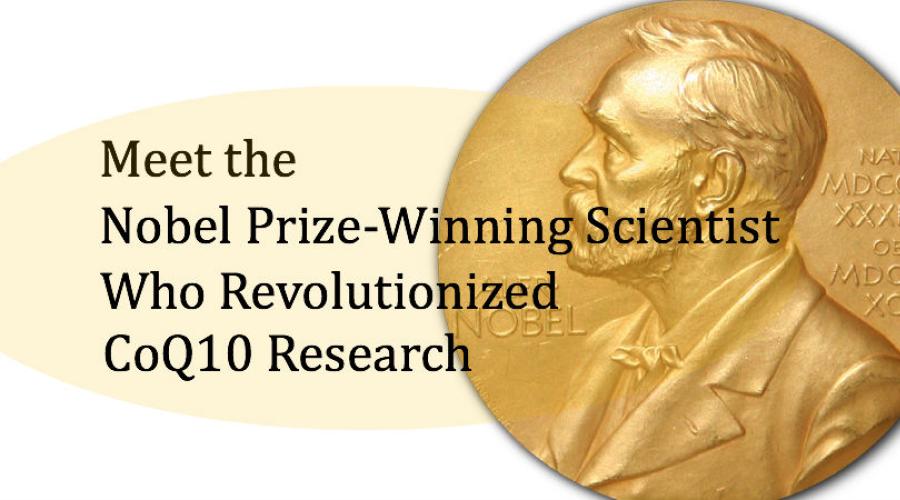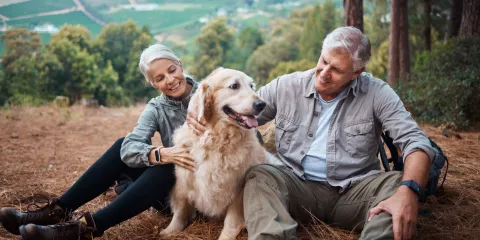
Like many other little boys, Peter Mitchell was curious at a young age. But unlike many other boys, Mitchell grew up to become a Nobel Prize-winning scientist and researcher. In 1961, his proposal of the electron transport chain and its vital role in Coenzyme Q10 and ubiquinol was to spark a revolution that to this day affects nearly all biochemistry research. It opened doors for further investigation like the studies done by Gian Paolo Littarru and Karl Folkers. Both Littarru and Folkers clarified the importance that CoQ10 played in optimizing heart health by focusing on its deficiency in the human vascular system. However, without initial work by Dr. Peter Mitchell, it’s difficult to know exactly where clinical studies on heart health and cardiovascular disease would be today.
Dr. Peter Mitchell grew up in Mitcham, in the county of Surrey (England). His father, Christopher Gibbs Mitchell, was a civil servant, and his mother, Beatrice Dorothy (née) Taplin, had a fondness for the arts. Although shy, his mother was very independent. As a rationalist and atheist, she instilled in Peter a personal philosophy of accountability with a keen sense of responsibility for one’s own failings and ambitions.
Dr. Mitchell attended Queens College where, with guidance from his headmaster, C.L. Wiseman, he immersed himself in mathematics. Soon after the war with Germany began in 1939, he was accepted to Jesus College. His Natural Sciences Tripos (a system of undergraduate studies for the University of Cambridge) consisted of extensive study in the areas of physics, chemistry, physiology and mathematics. He followed up with studies in biochemistry to earn his Honors degree. Eventually, he received his doctorate degree in 1951 for his work on penicillin and was awarded the post of Demonstrator at the Department of Biochemistry, Cambridge, from 1950 to 1955. In 1955, he was invited to create a Chemical Biology unit for the Department of Zoology at Edinburgh University. Soon after, he was appointed to a Senior Lectureship and Readership, but he eventually left to start his own laboratory, called the Glynn Research Foundation, with his brother, Christopher John Mitchell.
With complete freedom to advance his work, Dr. Mitchell developed the chemiosmotic theory that explains how the mitochrondia, a membrane that caters to the process of respiration and energy production within living cells, converts adenosine diphosphate (ADP) to adenoise triphosphate (ATP), the essential compounds required for intracellular energy transfer to occur. Largely ignored for years, Dr. Mitchell’s work was considered too far outside the mainstream to be valid. In 1966, after several more years of study, Dr. Mitchell decided to take matters into his own hands and publish his detailed evidence. First, it was published as a pamphlet, but two years later, he followed up with several small volumes called “little grey books” named after their rather unexciting covers. Just like change, investigative research is constant, and in the early 1970s, his theory gained significant acceptance among his peers and the scientific community in general.
While Peter Mitchell was not the first to discover Coenzyme Q10 (that distinction goes to Professor Fredrick L. Crane), his studies revealed that CoQ10 is a naturally occurring nutrient and plays a pivotal role in its electron transport chain that carries energy for efficient cell production. Eventually, his work would win him the 1978 Nobel Peace Prize in Chemistry “for his contribution to the understanding of biological energy transfer through formulation of the chemiosmotic theory.” Throughout his remaining years, Dr. Mitchell would go on to earn many awards and receive considerable recognition for his work before his death in 1992.
Without Dr. Mitchell’s influential work in biochemistry, ongoing research would have never uncovered much of what we know about CoQ10 today. CoQ10 is now recognized as an irreplaceable component in the energy-production process. Without it, cells would cease to function as they should. In fact, CoQ10 exists in two forms within your body: ubiquinone and ubiquinol. But, ubiquinol happens to make up nearly 95 percent of the existing Coenzyme Q10 in the human body with especially high concentrations located in the heart. While ubiquinone (the oxidized form of CoQ10) is found within the cells of the kidneys, liver and pancreas, your body needs to convert it from ubiquinone to ubiquinol to obtain the antioxidant properties that are so crucial for optimal heart health.
Cell Energy Transport and Its Heart-Healthy Mission
Within our systems, unpaired electrons called “free radicals” are floating around. Unstable free radicals strive to actively seek and search for cells in your body to steal electrons. This “mission,” called oxidation, can cause extreme cell damage. One way to prevent this damage from occurring is with antioxidants. Antioxidants are unique in that they have extra electrons that can pair up with the free radicals, thereby neutralizing and stabilizing the free radicals within our systems. As a powerful antioxidant, ubiquinol can protect against free radical damage and promote heart health.
Your body participates in a dynamic process whereby the donated ubiquinol electron is converted into CoQ10 or Coenzyme Q10. The process doesn’t stop there. Your body has the rare ability to recycle it back into ubiquinol so that it can continue to donate its additional electrons to free radicals. This transport of energy is crucial to the process. Unfortunately, as we age, our ability to convert CoQ10 diminishes. Your body may have the available CoQ10 but cannot efficiently donate electrons to convert the CoQ10 to ubiquinol as it had in the past. Doctors and experts are now recommending that people who take CoQ10 supplements switch to Ubiquinol supplements which provides you with the nutrient in a pre-converted form. Find out if you should switch with our quiz.












